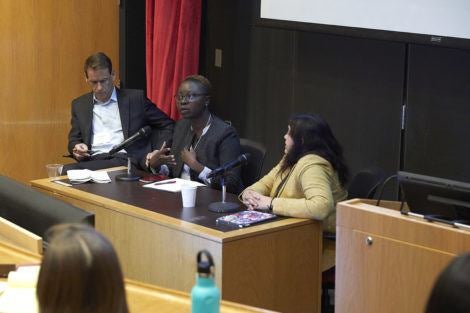November 27, 2019—Boosting agricultural productivity in low- and middle-income countries such as Ethiopia is a proven way to pull families out of poverty and boost rural economies, Rob Bertram of the U.S. Agency for International Development (USAID) recently told a Harvard T.H. Chan School of Public Health audience. But questions persist around how best to design food systems to provide healthy diets—a particular challenge in countries where hunger and childhood stunting exist alongside growing overweight, obesity, and chronic disease.
Bertram, who leads USAID’s global hunger and food security initiative, Feed the Future, spoke at the 10th annual Nutrition and Global Health Symposium held November 20 in Kresge G3. Watch video of event
Although the challenges of malnutrition are global, solutions depend on local contexts, Bertram said. For example, while studies have shown that plant-based diets are better overall for human and planetary health, they may be nutritionally inadequate for pregnant women and children in low-income countries.
In designing nutrition interventions, metrics matter, Bertram said—a point echoed by other speakers. “What gets measured, gets done,” he said.

Panel discussions focused on setting research priorities in a global nutrition and health agenda, and what types of new data are needed. Harvard Chan School postdoctoral research fellow Isabel Madzorera said that a challenge she faced working in the field on maternal and child nutrition interventions in African countries was that the tools she had for measuring diet quality were developed in the U.S. and had not been evaluated for use in the different nutritional environments found in low- and middle-income countries.
Anna Herforth, senior research associate at Harvard Chan School, said that while researchers can estimate what people around the world are eating, not much data exist. To help fill that gap, Herforth is working with the Gallup Global Diet Quality Project to collect data on the food and beverage choices of adults in 140 countries.
Researchers hope that having access to such comprehensive data could help explain the complex web of pathways that drive food choice in both rural markets and urban grocery stores around the world.
Photos: Kent Dayton
